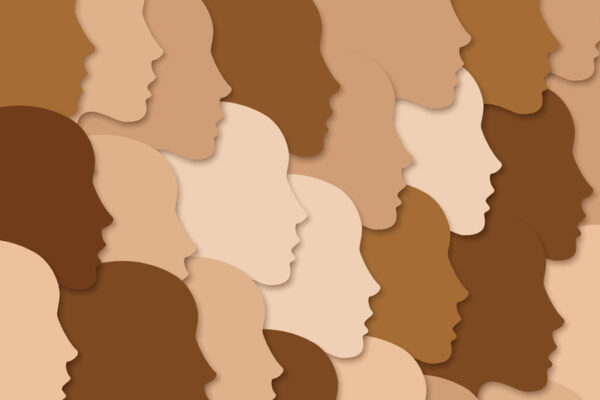
Amid an escalating overdose crisis, growing attention has turned to racial and ethnic disparities in the accessibility of medication-assisted treatment (MAT), such as buprenorphine. Most existing research has focused on disparities found in MAT amongst Black and Hispanic patients; by contrast, Asian American, Native Hawaiian, and Pacific Islander (AANHPI) communities remain notably under-researched and often overlooked due to systemic barriers and stereotypes. A study by Chhabra et al. analyzed approximately 1.1 million opioid-related emergency department (ED) encounters across the United States, highlighting disparities in buprenorphine prescribing by race, sex, and clinical factors. Most notably, Asian American (AA) and Native Hawaiian/Pacific Islander (NHPI) patients had lower odds of receiving buprenorphine compared to White patients, with adjusted odds ratios of 0.85 (95% CI: 0.79–0.91) and 0.79 (95% CI: 0.71–0.89), respectively. This makes an important contribution to understanding racialized access to MAT, particularly by leveraging disaggregated data by race and encounter subtype in opioid use disorder (OUD) research.
Contextualizing these disparities within broader sociopolitical and cultural frameworks is crucial for actionable change. Despite rising overdose rates, AANHPIs remain underrepresented in national discourse on substance use disorders (SUD). The omission reflects the enduring influence of the “model minority” myth, a stereotype portraying AANHPI individuals as uniformly successful and insulated from social and health challenges, including addiction. This narrative obscures serious health risks, including SUD, and fails to acknowledge rising drug overdose deaths among AANHPI From 2018 to 2022, overdose deaths rose to 17.5 per 100,000 for NHPI and 5.9 for Asian Americans; methamphetamine led among NHPI at 11.4 vs. 2.0 per 100,000. However, national surveillance systems often define AANHPI communities as uniformly low-risk, and while datasets like the National Survey on Drug Use and Health and Treatment Episode Data Set may report Asian American and NHPI data separately, they rarely disaggregate further by ethnic subgroup, limiting visibility into intra-group disparities in substance use and treatment access.
These challenges reflect the lived experience which is continuously shaped by language, culture, and trust in the healthcare system. AANHPI communities face multifaceted barriers to MOUD access that extend beyond clinical presentation. National data systems such as the NSDUH are only conducted in English and Spanish, thereby excluding many individuals with limited English proficiency, especially older adults and AANHPI immigrants. Cultural perceptions and stigma surrounding substance use, rooted in concerns about shame and moral failure, also discourages treatment-seeking. Immigration-related fears, lack of ethnically concordant providers, and perceptions that services are not culturally appropriate may further reduce engagement. As such, an estimated 60% of NHPI individuals who reported a need for addiction care either avoided or delayed treatment.
To translate evidence into equity, interventions must not only be available, but also accessible, acceptable, and culturally attuned. Therein lies an opportunity to implement culturally responsive linkage programs in both ED and primary care settings. Health systems should prioritize ensuring access to interpreters and integrate peer navigators from AANHPI communities. For instance, the Asian Women’s Action for Resilience and Empowerment (AWARE) pilot study demonstrated the efficacy of providing culturally tailored, trauma-informed group therapy for Asian American women of Chinese, Korean, and Vietnamese descent, addressing issues such as intergenerational trauma, internalized stigma, and racism. These efforts align with the priorities outlined by the U.S. Department of Health and Human Services (HHS), including offering culturally appropriate care, data disaggregation, and reducing health inequities through community engagement. Efforts to expand access to OUD treatment must be inclusive of AANHPI communities, recognizing the structural challenges and unique cultural dynamics shaping their care needs.
Despite emerging research, critical gaps remain are still present in understanding OUD research within AANHPI populations. Future research has an opportunity to conduct intersectional analyses that better reflect the vast diversity of AANHPI populations, investigating the burden of substance use disorders across specific ethnic subgroups and factors such as language, immigration status, and generational experiences. Policy development should also prioritize culturally sensitive prevention and treatment programs, such as integrating interpreter services and equity metrics into federal and state substance use initiatives; it will increase the reach for AANHPI communities. Importantly, researchers and policymakers must challenge the default framing and stereotypical minority myth mindset which uniformly classifies AANHPI communities as low-risk, hindering both visibility and resource allocation.
As the overdose crisis evolves, so too must the frameworks which support equity and diversity within clinical settings. Stakeholders including clinicians, researchers, community leaders, and policymakers all have a critical opportunity to expand access to culturally responsive, evidence-based addiction care models to advance health equity amongst AANHPI communities. Meeting this critical gap requires the collaborative action of all parties to ensure that AANHPI communities are not only visible in data, but central to the future of equitable addiction care.
Photo credit: Andrii Shyp, Getty Images
Imeth Illamperuma is an undergraduate student at McMaster University studying Kinesiology with a Secondary in Psychology and a Certificate in Rehabilitation Science. He has extensive experience in public health research and policy advocacy through affiliations with the Centre for Addiction and Mental Health (CAMH), McMaster University, and Boston University’s Department of Medicine. His work focuses on a plethora of topics including harm reduction, youth mental health, and the integration of artificial intelligence in clinical decision-making. Imeth is the Founder and President of SHIELD and the Founder of The Naloxone Project, one of the largest student-led University based emergency naloxone implementation and advocacy initiatives in Canada. He is committed to advancing evidence-based, equity-driven approaches to healthcare system design and utilization.
Suhanee Mitragotri is an undergraduate student at Harvard University studying Neuroscience with a Secondary in Global Health and Health Policy. She is also the Co-Founder of the Naloxone Education Initiative, a program that aims to expand opioid and naloxone education to youth. She has written extensively on topics related to the opioid crisis, harm reduction, and drug policy and has published articles in various journals and magazines, including The Lancet Regional Health Americas, Addiction, Health Affairs Forefront, The Boston Globe, and New Scientist.
David T. Zhu is a third-year MD/PhD candidate in Health Policy at Virginia Commonwealth University School of Medicine. His research focuses on substance use disorders, clinical epidemiology, health economics, and social determinants of health. His work has been published in leading journals, including The Lancet, The Lancet Regional Health Americas, JAMA Network Open, JAMA Psychiatry, Nature Scientific Reports, and Harm Reduction Journal. David’s contributions to addressing the overdose crisis have been recognized by multiple foundations, including The Diana Award, the Boston Congress of Public Health’s 40 Under 40 in Public Health, the National Minority Quality Forum’s 40 Under 40 Leaders in Minority Health, and the U.S. Public Health Service’s Excellence in Public Health Award.
This post appears through the MedCity Influencers program. Anyone can publish their perspective on business and innovation in healthcare on MedCity News through MedCity Influencers. Click here to find out how.











